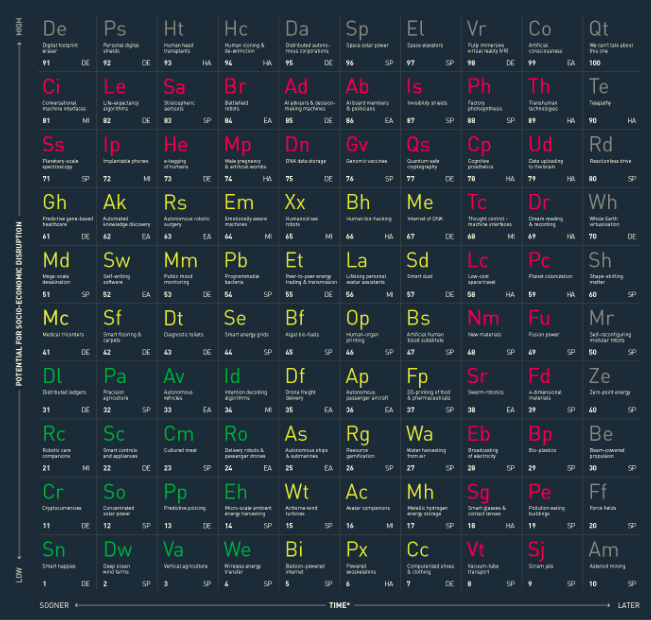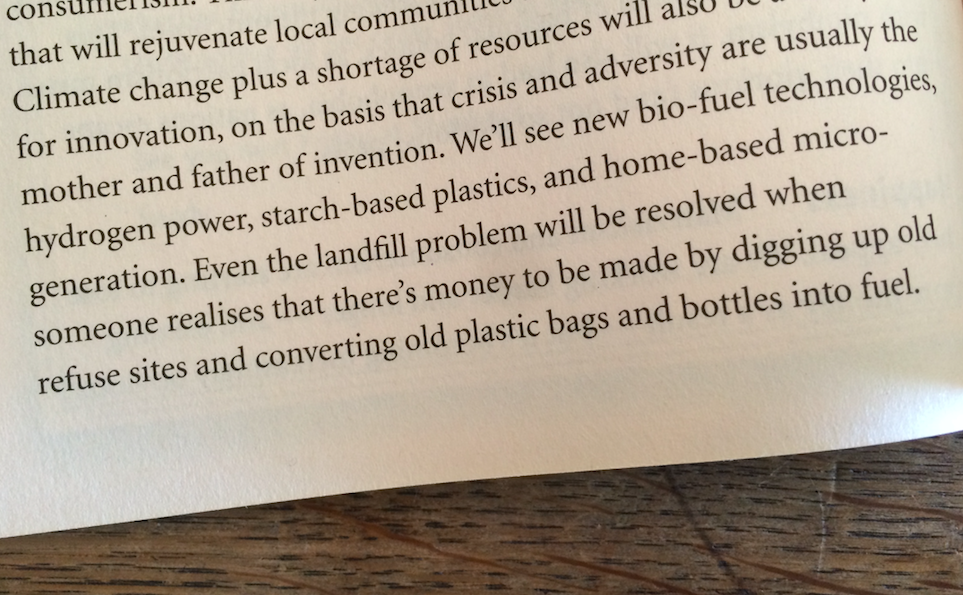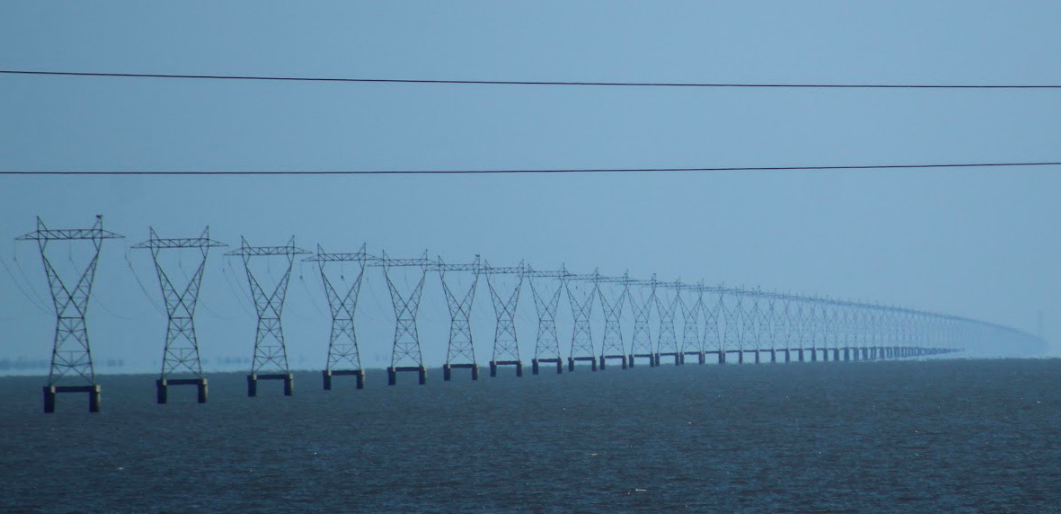
Apparently, there are two types of futurists. There are those that don’t know and there are those that don’t know they don’t know. I don’t know which of these categories I fall into, but according to a person I met at a conference recently I may fall into a third category.
After presenting, someone came up to me and asked if I was a reluctant futurist? I said no, I was a cynical one. One shaped by decades of disappointment concerning the lack of flying cars, moon hotels and roast dinner in a pill (with two vegetables and gravy).
I think such cynicism is a good thing. If we know one thing about the distant future with absolute certainty it’s surely that it’s uncertain. The reason we get into trouble, more often than not, is we lack cynicism. We convince ourselves than things will or won’t happen and make zero preparation for any alternatives.
With a handful of exceptions, there are always a number of ways things can turn out. This is something we should have remembered more carefully with regards to both Trump and Brexit. It is something we should continue to keep in mind when we think about everything from the internet of things and the impact of AI on employment to the drone delivery of pizza (with insect topping).
On the other hand, while some aspects of the future will always disappoint, others will always be a delight. Personal jetpacks may be a flight of fancy, but we do have – or soon will have – self-driving cars, 3-D printed kidneys and ultra-efficient solar panels.
But do not be fooled into thinking that any of these things are inevitable. Having an idea is one thing. Making it reality is another and while most countries have an imagination problem, a far more serious issue is usually political will. Anything that’s expensive, risky or very long term tends to die before the next election.
For example, at the moment our thinking around solar is timid. We add tiny panels to the roofs of a few houses in grey- skied Britain. But what if we covered 0.3% of the one of the world’s sunniest places with solar panels instead?
I’m not thinking of Eastbourne, I’m thinking of the Sahara. If we covered 0.3% of the desert with solar panels this could provide enough energy to power Europe. If we increased the coverage to 1% we’d have enough energy to power the whole world, including billions of new electric vehicles.
Self-driving cars seem to have moved from the slow lane of the improbable to the fast lane of the inevitable rather quickly of late, although I’m still a little cynical about whether it will work as fast as some people expect. I think it will be a messy two-speed transition.
The good news is that big money wants this idea to work. Google, occasionally the world’s most valuable company, is heavily invested as are most of the big automakers. Uber, now partly owned by Google, is also intent on making this happen and it’s perhaps interesting to note that back in 2015 Uber (when it was then just 5 ½ years old) Uber was worth more money than GM (which was then 107 years old).
Why do these companies want this future? In a word money.
Self-driving cars also go some way to sorting out urban congestion, we’d reduce traffic deaths and injuries substantially, we’d reduce pollution and emissions, free up people to be more productive (allegedly) and also have a way of moving an ageing and increasingly isolated population around safely.Interestingly, and this is something I’ve yet to read about in the mainstream media, billions of electric vehicles provide another major benefit, which is the physical storage and movement of electricity.
It seems to me that we don’t really have an energy problem on this planet as much as an energy storage problem. If we allowed people to move electricity around locally and buy it and sell it among themselves then many of our energy problems would evaporate in a lightening flash of self-interest and entrepreneurship.
Whether electric vehicles will accelerate the trend towards decentralisation of energy remains to be seen, but energy certainly needs to be opened up to innovation and democracy. The energy mix will I’m sure become broader, although I for one would still expect fossil fuels to dominate overall until at least the year 2035.
But don’t just think of this as starting and ending with self-driving electric cars. We’ll almost certainly have fully autonomous buses, delivery vehicles (including pizza delivery robots), self-harvesting farms and hospital trolleys, all of which will be able to physically store and move energy from one place to another in some form.
BTW, travelling back to Trump for a second, who saw the re-emergence of big coal in the US a year ago? The lesson here, again, is to keep our minds (as well as eyes and ears) open to unexpected developments that could result in the future taking a sharp turn at high-speed while most people are looking in their rear-view mirror.
We’re all, more or less, expecting one particular future, but this future could change at any minute and if we are to avoid a high-speed collision it would serve us well to not only look further ahead but backwards and to our sides as well.
I’ll come back to transport in a moment, but what else is on the horizon in terms of energy? Next generation bio-fuels are interesting, especially growing carbon neutral or carbon negative fuel using synthetic biology.
And while we might have a real problem scaling up any renewable energy source beyond solar I do believe that enough small ideas added together could make a big difference.
Harvesting waste heat is a big opportunity, especially in urban areas, and so too is vibration harvesting. In theory, ambient energy could power all our personal devices along with an Internet of Things.
Hybrid-electric power is really interesting and whilst it’s currently the preserve of vehicles like the Toyota Prius and the Porsche 918 supercar it could be easily applied to aviation, with combustion engines being used to take off and electric power for cruising and landing. Beyond this we might see very small nuclear reactors powering aircraft and ships and possibly even factories.
As for automotive, I think it’s reasonably inevitable that with some exceptions vehicles are going to get smaller and lighter with many vehicles being designed for just one passenger (4-seater cars are totally at odds with the demographic in many countries).
As autonomous vehicle fleets emerge I’d expect fleet owners to become more dominant and for cost and efficiency to come further to the fore. I’d expect more movement, especially in urban areas, and more utility, but I wouldn’t expect the full disappearance of luxury and status. In fact, I’d fully expect that if we no longer need to drive some people will decide they want to and segments of the automotive market could return to its roots with driving once again becoming a pleasure rather than a chore.
We might see in-road inductive charging plates and potentially even roads with embedded power rails too.
Trains are looking like an important part of the future, especially very high speed – possibly maglev – intercity trains. 500 km per hour commutes are entirely possible, which would potentially eliminate the North/South divide in the UK for example.Whether Mr Musk will ever get to build his vacuum tube transport system remains rather unclear, although I can see a version of this working really well to transport packages rather than people.
But back to batteries.
I attended an event hosted by a military technology investment firm a while ago and it’s not breaking any confidences to say that much of the interest in the room surrounded battery technologies. Suffice to say that if you are spying or fighting in a far-flung corner of the world you need batteries. Popping out for a new one or charging one quickly can be problematic. A matter of life and death in fact.
So, I agree that batteries are a huge industrial opportunity and I’m expecting some significant developments in the areas of battery life (which with electric vehicles means range), recharging speed, size and sustainability.But don’t just think of automotive opportunities here. The shift to a digital business models and the electrification of the human body via wearable devices means that while the information industry might be the new energy industry, we’ll need both and the future.
The future will thus, most likely, consist of an eco-system of objects and devices that generate and store energy and also one where customers have a much better idea of what energy use costs for individual devices. The cost of energy might even be related to its end use or even the age and income of the user.In this future expect to see Google (or possibly Apple, Uber or Tesla) emerge as an energy traders and provider selling both devices and the energy required to use them.
As to which energy technologies will become ‘sticky’ that’s an interesting question and certainly moves beyond the purely technological into the realms of the psychological.
An interesting parallel to carbon-zero transport might be smoking.
We knew for years that smoking was bad for us, but pricing and taxation didn’t seem to make much of a difference. I might suggest that personal mobility be a similarly inelastic good.
I haven’t studied cigarettes in detail, but it seems to me that behaviour first started to change when two things happened almost simultaneously. Firstly, it became harder to find places to smoke due to local legislation. Secondly, e-cigarettes (which had been around a while) took off.
Of course, it would be a mistake to think that’s the end of the story. Trends have a habit of remerging when we think they’re dead.Smoking real cigarettes is still popular in many parts of the world and e-cigarettes may well become a gateway drug generationally.
Personally, while I can see personal mobility emerging as a service, where people choose access over ownership, especially in urban areas and at a generational level, I cannot foresee a fully electrified transport system for some time.
In rural areas, the case for an electrified transport system makes less sense and there’s also a powerful political lobby that is attached to combustion engines. And don’t forget that technological change can be economically dependent too. If the economy is healthy things might move relatively fast due to climate concerns, but if the economy is in the doldrums then people might focus on problems that are more immediate and closer to home.
So, expect an automotive future that’s and not or. One built on addition not subtraction. And one where things take considerably longer to happen that some people expect. This would be perfectly in tune not only with Gartner’s Hype Cycle, but Amara’s Law, which states that we tend to overestimate the effect of a technology in the short run and underestimate the effect in the long run.
To end, how about some inevitable surprises. What could derail an electrified future?
The main surprise to my mind isn’t anything to do with technology. Rather it’s demography. An ageing population combined with a low fertility rate could mean a serious skills shortage in the UK, especially in the area of STEM. Half of UK schools, I read last week, have already axed design and technology GCSEs to focus on what they consider ‘core subjects’, which doesn’t bode well.An Internet of Things (IoT) that turns into an Internet of Things to be Hacked (OMG) might be another game changer as would any serious Big Tech backlash, especially a collapse of trust surrounding autonomous and semi-autonomous systems.
Or what about something much more sci-fi?
Is there anything ‘out there’ in the sci-fi literature that’s of interest?
The Dean Drive, or Reactionless Drive, whereby motion is created without the exhaust of a propellant might be one contender, but I was especially interested in something a little crazier in the newspapers last weekend.
A team from Harvard suspects that mysterious flashes in a galaxy far, far away might just possibly be caused by aliens firing up their spaceships.
Scientists at the Harvard-Smithsonian Centre for Astrophysics cannot currently come up with a natural explanation for the existence of radio pulses known as Fast Radio Bursts (or FRBs).
These bursts, which last no more than a millisecond, could have a non-natural source, especially if somebody – or something – had managed to construct a solar energy collection system twice the size of the Earth. Space solar. It’s an old idea.
As Prof Loeb and Dr Lingam said: “An artificial origin is worth contemplating and checking.”
Or as Yoda might say” Aliens there are maybe.”





